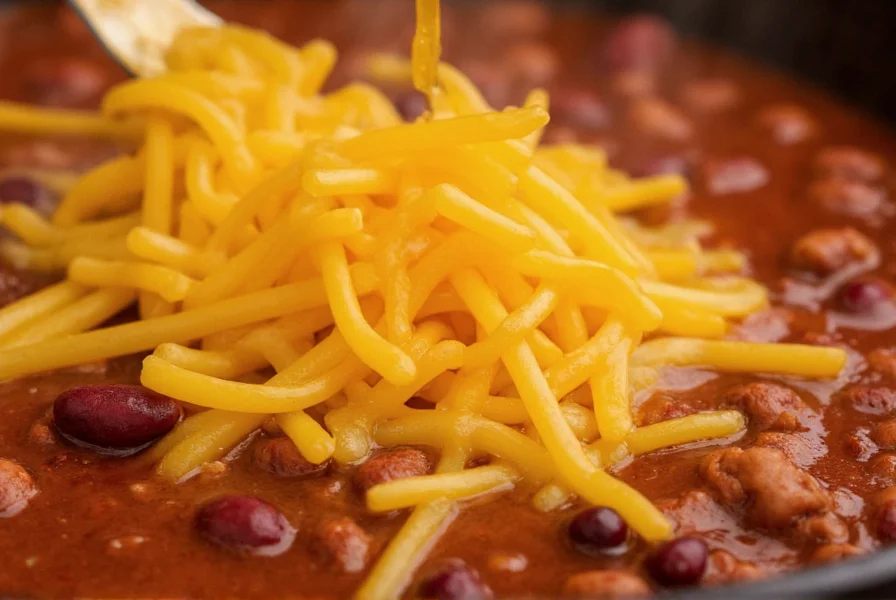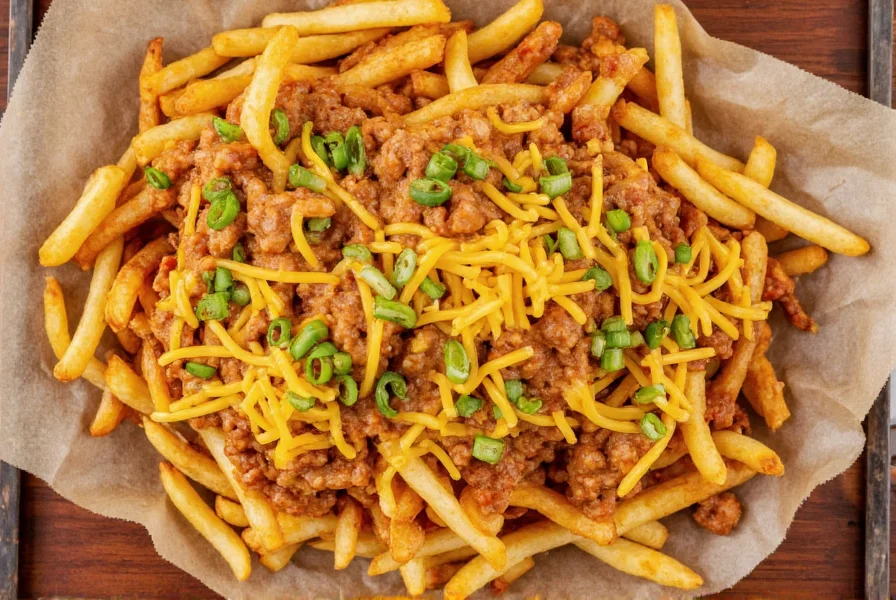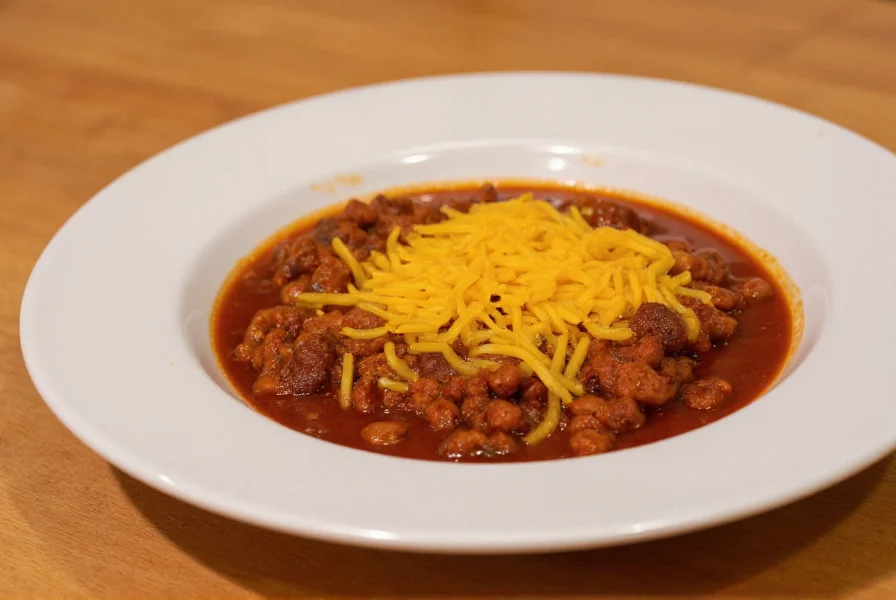When prepared correctly, chili and cheese creates a harmonious blend where the cheese's creamy richness complements the chili's deep, savory notes without masking its distinctive flavor profile. This classic American comfort food pairing works because cheese proteins bind with chili's capsaicin, reducing perceived heat while enhancing umami elements. The best results come from using freshly grated cheese added at the perfect temperature point—neither too hot nor cooled—to achieve that signature velvety texture without becoming greasy or stringy.
The History Behind This Iconic Pairing
Chili con carne emerged from Texas-Mexico border regions in the 19th century, while cheese-topped chili gained popularity during the Great Depression when affordable ingredients needed to stretch. Restaurants in Cincinnati and Texas began serving chili over spaghetti with cheese in the 1920s, cementing this combination in American culinary tradition. The 1950s saw chili cheese dogs become baseball stadium staples, further embedding this pairing in popular culture.
Best Cheese Varieties for Chili
Not all cheeses perform equally when paired with chili. Understanding melting properties and flavor profiles helps create the perfect combination:
| Cheese Type | Melting Quality | Flavor Profile | Best For |
|---|---|---|---|
| Medium Cheddar | Good melt, slight oil separation | Sharp, tangy | Traditional chili bowls |
| Monterey Jack | Excellent melt, smooth texture | Mild, buttery | Creamy chili variations |
| Pepper Jack | Good melt with spice infusion | Spicy, creamy | Southwest-style chili |
| Cotija | Doesn't melt, crumbly texture | Salty, tangy | Garnish for authentic chili |
Perfect Technique for Adding Cheese to Chili
Temperature control proves critical when combining cheese with chili. Adding cheese to boiling chili causes proteins to seize, creating a grainy texture. The ideal approach involves removing chili from heat, allowing it to cool slightly to 165°F (74°C), then gradually incorporating freshly grated cheese while stirring gently. Pre-grating cheese prevents uneven melting that occurs with pre-shredded varieties containing anti-caking agents. For restaurant-quality results, create a cheese sauce by making a light roux with butter and flour before adding milk and cheese.

Signature Chili and Cheese Recipes
Mastering the classic pairing requires understanding regional variations and preparation techniques:
Texas-Style Bowl with Sharp Cheddar
This straightforward preparation highlights quality ingredients. Simmer beef chili with onions, garlic, and ancho chilies for three hours. Serve in pre-warmed bowls with 2 ounces of freshly grated sharp cheddar per serving. The cheese should melt partially while maintaining some texture. Traditional accompaniments include saltine crackers and diced white onions.
Cincinnati-Style Spaghetti Chili
Layer cooked spaghetti in deep bowls, top with meaty chili, then finish with equal parts cheddar and Monterey Jack. The starch from spaghetti helps emulsify the cheese into the chili. Authentic versions include a dash of cocoa powder in the chili for depth and a small amount of cinnamon for complexity.
Avoiding Common Mistakes
Many home cooks ruin this classic pairing through preventable errors. Never use pre-shredded cheese with cellulose coating that prevents proper melting. Avoid adding cheese to chili that's still boiling vigorously. Don't mix cheese directly into the entire pot—this dilutes flavor and creates uneven texture. Resist using overly processed cheese products that separate when heated. And never substitute cheese sauce from a can for freshly melted quality cheese.
Serving Temperature and Presentation
Temperature dramatically affects the chili and cheese experience. Serve chili at 165°F (74°C)—hot enough to melt cheese properly but not so hot that it breaks down. Pre-warm serving dishes to maintain ideal temperature throughout the meal. For visual appeal, create a cheese dome by sprinkling cheese in the center rather than spreading it evenly. Allow one minute for partial melting before serving to achieve that perfect semi-molten texture.

Regional Variations Worth Trying
Across America, creative interpretations of chili and cheese have emerged. In Michigan, coney sauce (a thinner chili) tops hot dogs with mustard and fresh cheese. Colorado features green chili with jack cheese. New Mexico serves red chili over blue corn mush with queso fresco. Chicago's chili dogs use a specific meat sauce with mustard and shredded cheddar. Each variation respects the fundamental balance between spicy stew and creamy dairy while adding local character.
Storage and Reheating Guidelines
Proper storage maintains quality for leftovers. Store chili and cheese separately—cheese degrades faster when mixed with acidic tomato-based chili. Refrigerate chili for up to five days or freeze for three months. Reheat chili gently on stove rather than microwave to preserve texture. Add fresh cheese after reheating for best results. Never freeze cheese-topped chili as the dairy separates upon thawing.
Frequently Asked Questions
What's the best cheese for traditional beef chili?
Medium cheddar provides the ideal balance for traditional beef chili, offering tanginess that complements the meat's richness without overwhelming the complex spice profile. For optimal results, combine equal parts medium cheddar and Monterey Jack to achieve both flavor depth and smooth melting properties.
Can I use vegan cheese with chili?
Yes, but select vegan cheeses specifically formulated for melting. Look for brands containing coconut oil or tapioca starch which mimic dairy's melting properties. Add vegan cheese at lower temperatures (around 150°F) since plant-based cheeses often break down more easily than dairy when overheated.
Why does my cheese become stringy in chili?
Stringiness occurs when cheese proteins seize due to excessive heat or rapid temperature changes. To prevent this, remove chili from heat before adding cheese, let it cool to 165°F, and use freshly grated cheese rather than pre-shredded varieties which contain anti-caking agents that interfere with smooth melting.
How much cheese should I use per serving?
For standard bowl servings, use 1.5-2 ounces of cheese per 8-ounce portion of chili. This provides sufficient coverage without overwhelming the chili's flavor. When making chili cheese fries or nachos, increase to 3-4 ounces per serving to account for the additional base ingredients.
Does cheese reduce chili's spiciness?
Yes, cheese proteins bind with capsaicin (the compound that creates heat in chili peppers), effectively reducing perceived spiciness while enhancing overall flavor complexity. The casein in dairy acts as a natural capsaicin solvent, making cheese an ideal companion for spicy chili varieties.











 浙公网安备
33010002000092号
浙公网安备
33010002000092号 浙B2-20120091-4
浙B2-20120091-4